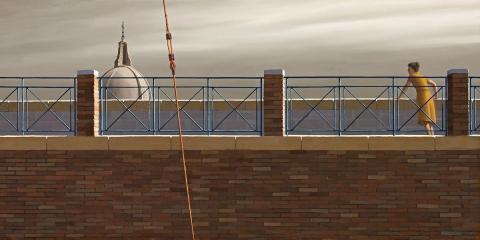MISS AMHURST’S FIRST VISIT TO ROME, 1968 – 69
JEFFREY SMART
oil on canvas
50.0 x 99.0 cm
signed lower right: JEFFREY SMART
inscribed with title verso: MISS AMHURST
Macquarie Galleries, Sydney
The Estate of the late James O. Fairfax AC, New South Wales, acquired from the above in 1969
Jeffrey Smart, Macquarie Galleries, Sydney, 17 – 29 September 1969, cat. 13
Quartermaine, P., Jeffrey Smart, Gryphon Books, Melbourne, 1983, cat. 514, p. 110
Jeffrey Smart occasionally introduced fictional characters into his painting titles, whilst issuing caveats against attaching excessive symbolic significance to them. In this case however, the appellation Miss Amhurst to the single female figure in an architectural setting in Rome has an irresistible anecdotal connection with the artist’s essential ambition.
Smart claimed this work was inspired by a short story written by a close friend from his Adelaide years Fayette Gosse: I must remember Miss Amhurst.1 Unfortunately no published short story of this title has come to light. Perhaps Gosse showed it to Smart in manuscript form, recalling a novel by nineteenth century Scottish-Canadian writer Robert Barr centred around a heroine, Miss Dorothy Amhurst, who at the end of the story sets off from America, eloping to Europe.2
This chimes with Smart’s admiration for American novelists Henry James and his protégée Edith Wharton and their own dreams of crossing from the New World to the Old. Hence, in this little-known painting, we could actually be looking at a representation of Smart’s alter-ego, reflecting on his own fortune of finally settling substantially in a place where he had so long yearned to live; an Italian city with a glorious past confronted by a still uncertain post-war present.
An unadorned dome and its peculiar minimalist apex peeks above a modern parapet bridging the two vertical sides of the picture. Stasis is disturbed only by the slight lean of a tense cable slicing the composition in two at the point of the Golden Mean. Two worlds thus face each other in a pivotal moment of boldness from Smart’s pictorial repertoire. The moment seems to signify something, but we can only speculate to what extent.
Miss Amhurst’s First Trip to Rome, 1968–69 was in fact painted during a period of exceptional importance for Smart. He had, from late 1964, led a fairly peripatetic life in Rome without a proper studio. Then in October 1968 he rented a dilapidated flat at the top of Via Mantellate with spectacular views of the city from a terrace, creating an exclusive, separate studio for the first time since leaving Adelaide permanently almost two decades earlier. Here, in a conscious modernist construct with supreme control of his language, he repeated an enduring obsession for walls, fences, hoardings or building facades, brought forward occasionally with challenging frontality to obscure zooming perspectives, or at least counteract any push into deep space.
Indeed, from late 1968 in his studio at Via Mantellate until his move to Tuscany in 1971, he was to produce some of his most memorable masterpieces annihilating distant horizons, utilising textures, stripes and modular architectural patterns for locking one’s gaze into a state of resolute stillness on the picture plane. They include The Water Tower, 1968, Approach to a City III, 1968–69, Morning Practice, Baia, 1969–70 and Housing Project No. 84, 1970. To such enterprising geometric visions of its period we may now add Miss Amhurst’s First Trip to Rome.
1. Smart, J., et al., Jeffrey Smart/drawings and studies 1942-2001, Australian Galleries, 2001, cat. 95, figure study for Miss Amhurst’s first visit to Rome, 1968–69, p. 83. Note typographical error: Gosse mistakenly spelt Grasse.
2. Barr, R., A Rock in the Baltic, Authors and Newspapers Association, New York and London, 1906
BARRY PEARCE
Emeritus Curator of Australian Art
Art Gallery of New South Wales
20 - JAMES FAIRFAX IN ROME.jpg
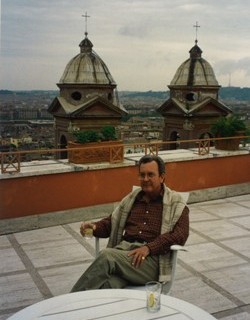
JAMES FAIRFAX IN ROME
20 - ERMES DE ZAN, JAMES FAIRFAX AND JEFFREY SMART.jpg
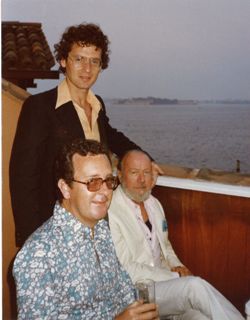
ERMES DE ZAN, JAMES FAIRFAX AND JEFFREY SMART
20 - JAMES FAIRFAX WITH JEFFREY SMART.jpg
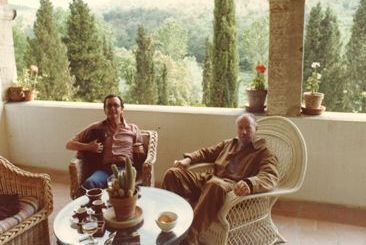
JAMES FAIRFAX WITH JEFFREY SMART
20 - JEFFREY SMART AND OTHERS, DINING ROOM, RETFORD PARK.jpg
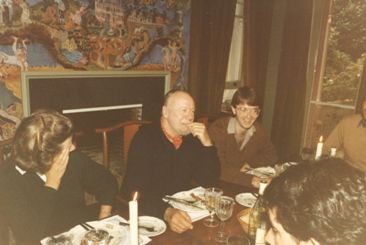
JEFFREY SMART AND OTHERS, DINING ROOM, RETFORD PARK
